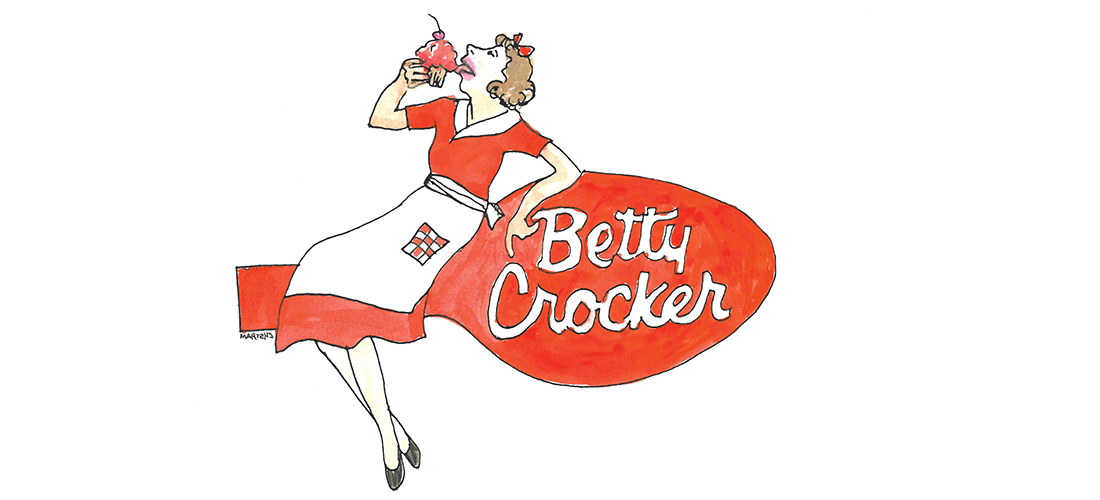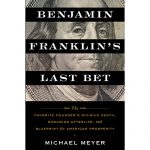
Baking Betty
Research, research, research
By Ruth Moose
Betty Crocker and I go back a while, though I don’t go back as far as she goes. Betty Crocker, icon for General Mills, is 100 years old this year. One of the most recognized advertising symbols in the world, Betty has only gotten younger. Many up-to-date hairdos and wardrobe changes. She has kept up with the times. My relationship with her ended amiably enough, and I have my little red spoon of confidence lapel pin to prove it.
Many years ago when I lived in Charlotte in a split-level house, carpooled in a wood-paneled station wagon, and did all kinds of PTA and Boy Scout stuff, my family was a member of a very exclusive club. We were one of 500 General Mills test families across the country. I tested recipes that ended up on the backs of cereal boxes, flour packages and General Mills products, excuse the expression, in general. I wasn’t paid but was reimbursed for the cost of recipe ingredients. I figured since I baked and cooked anyway, why not make it interesting? And I like to try new recipes.
Helen Moore, my good friend as well as neighbor, was at that time food editor for the Charlotte Observer. She invited me and several other women of various ages and stations to a lunch with two home economists from General Mills. It was a lovely lunch in a nice restaurant, a real treat in the middle of the week. Good food, fun conversation, and afterward I was asked to be part of 500 families scattered across the country. The home economists explained that, though they tested recipes in their laboratory kitchens in Minneapolis, they wanted reactions from real people in real home kitchens. Where the pasta meets the road, so to speak.
During the years I tested a variety of recipes, everything from vegetable dishes (carrots cooked in frozen apple juice with fresh ginger was a good one) to cookies made with various cereals, to a whole series of recipes using wine. I saw many of these later in cookbooks. For the most part, my family was good-natured about the whole thing. They were used to seeing different things on the table when they sat down to dinner.
After I tested a recipe, I filled out forms that included what I had paid for certain ingredients, whether I had them on hand, how difficult they were to find, and so on. Other forms asked if the instructions on the recipe were clear. Was it hard to follow? How much time did it take to make it? And there was always the question of my family’s reaction. They were the ultimate arbiters. Actual people eating real food in a home kitchen. Nothing complicated. Except the time I was sent a recipe for gumbo.
No, I did not have filé powder on hand.
No, I did not keep canned okra on my pantry shelf.
I didn’t know you could even CAN okra. And it surely didn’t sound appetizing. Breaded and fried okra is food of the gods! But okra in a can? In the South yet? Sacrilege.
So, I went in search of canned okra. In those days Amazon wasn’t even a twinkle in Jeff Bezos’ eye. Managers of the A&P, Kroger’s and Harris (before there was Teeter) laughed at me. Was I some kind of nut? Canned okra? I finally found a lonely can on the bottom shelf of a tiny exotic foods market. Exotic for North Carolina, certainly.
Then I made my first and only gumbo.
My family’s reaction, after a couple of mouthfuls, was to ask if we couldn’t go to McDonalds.
We did, leaving plenty for the garbage disposal and a none-too-glowing report for Betty Crocker.
After that, whenever my sons sat down to something unfamiliar, their immediate reaction was, “Are we eating Betty Crocker?”
I probably tested recipes for Betty for six or eight years. The gumbo was the only unqualified disaster. A lot of the recipes I still make — a Wheaties cookie; many of the wine dishes, including a pot roast cooked with Burgundy.
The program was discontinued but, as a token of their appreciation, I was given a tiny version of Betty’s trademark, a small, enameled red spoon lapel pin — the Phi Beta Kappa of gumbo, I suppose — and a real conversation piece at dinner parties. PS
Ruth Moose taught creative writing at the University of North Carolina-Chapel Hill for 15 years and tacked on 10 more at Central Carolina Community College.





